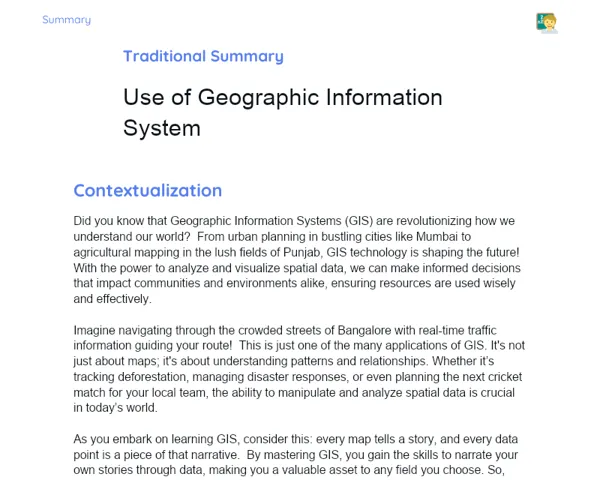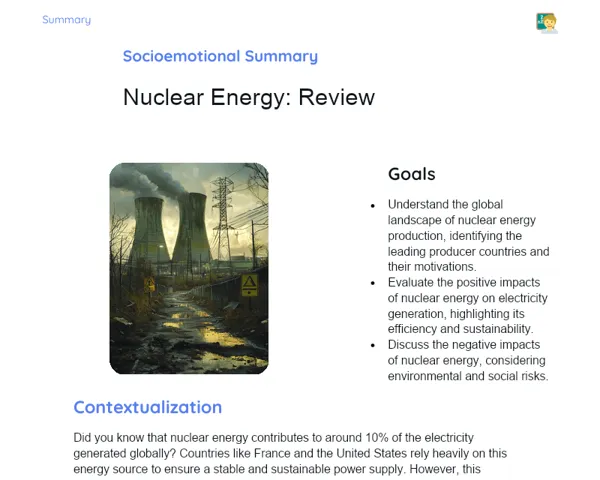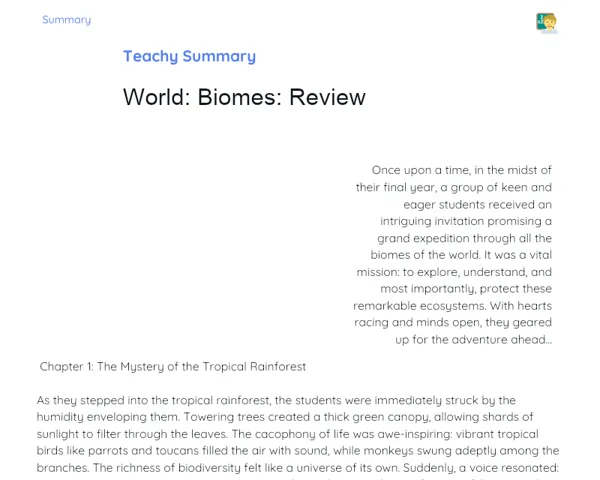Goals
1. Gain insights into the various biomes of the Asian continent, including tundra, taiga, temperate forests, deserts, and tropical forests.
2. Appreciate the interplay between Asian ecosystems and the continent's climate, geographical features, and water systems.
3. Recognize the geographical intricacies and natural diversity of Asia.
Contextualization
Asia is a land of extremes, from the arid deserts found in places like Rajasthan to the lush tropical forests of Southeast Asia. The continent boasts a rich tapestry of biomes, making it home to incredible natural wealth. Understanding these elements not only sheds light on Asia's geography but also reveals their influence on the livelihoods of its people. For instance, the Gobi Desert is expanding due to changing climate patterns, impacting local communities and wildlife. Meanwhile, the tropical forests of Southeast Asia play a pivotal role in stabilizing the global climate and protecting countless species unique to this region.
Subject Relevance
To Remember!
Tundra
Tundra is a unique biome known for its low temperatures and permanently frozen ground, referred to as permafrost. This biome predominantly exists in the Arctic and subarctic regions of Asia, particularly northern Russia. The vegetation here is sparse, primarily consisting of mosses, lichens, and low shrubs.
-
Location: Northern Russia and Arctic regions.
-
Climate: Extremely cold with frozen ground.
-
Vegetation: Dominated by mosses, lichens, and shrubs.
-
Fauna: Home to cold-adapted animals like reindeer and Arctic wolves.
Taiga
The taiga, or boreal forest, is a vast coniferous biome spanning a significant portion of Asia, especially Siberia. This region experiences long, harsh winters and short summers, with the principal trees being pines, spruces, and other conifers.
-
Location: Predominantly in Siberia.
-
Climate: Long winters with cold conditions and brief summers.
-
Vegetation: Composed mainly of coniferous trees like pines and spruces.
-
Fauna: Includes species like bears, wolves, moose, and various migratory birds.
Tropical Forests
Asia’s tropical forests are mainly located in Southeast Asia, encompassing countries such as Indonesia, Malaysia, and Thailand. These forests are incredibly biodiverse and enjoy warm, humid weather year-round. They are crucial for global climate regulation and host countless endemic species.
-
Location: Southeast Asia (including Indonesia, Malaysia, Thailand).
-
Climate: Warm with high humidity throughout the year.
-
Vegetation: A range of tall trees and dense undergrowth.
-
Fauna: Supports a variety of species including tigers, elephants, orangutans, along with numerous birds and insects.
Practical Applications
-
Geographers and environmentalists examine Asia’s biomes to understand climate change impacts and develop effective mitigation strategies.
-
Environmental engineers apply knowledge of these biomes to design infrastructure projects that promote ecological balance and sustainability.
-
Ecotourism initiatives advocate for responsible tourism in natural habitats, emphasizing the significance of conserving these biomes.
Key Terms
-
Biome: A significant community of plants and animals characteristic of a specific environment.
-
Permafrost: Soil that remains frozen year-round, found in Arctic and subarctic regions.
-
Boreal Forest: Another term for taiga, which refers to coniferous forests found in cold climates.
Questions for Reflections
-
How do the diverse biomes of Asia impact the local communities and their ways of life?
-
In what ways can understanding Asian biomes contribute to strategies for combating climate change?
-
What challenges do we face in preserving the biomes of Asia, and how can we tackle these challenges effectively?
Creating a Virtual Field Journal
Your task is to create a virtual field journal that captures the unique features of an Asian biome of your choice. The journal should cover information on climate, vegetation, fauna, and the effects of climate change on the selected biome.
Instructions
-
Select an Asian biome for your virtual field journal (tundra, taiga, temperate forests, deserts, or tropical forests).
-
Conduct research on your chosen biome, collecting in-depth information regarding climate, vegetation, fauna, and the impact of climate change.
-
Utilize a text editing or presentation software (like Google Docs or PowerPoint) to compile your virtual field journal.
-
Incorporate images, maps, and graphs to visually represent the information you've gathered.
-
Add a brief narrative discussing the importance of preserving your selected biome and the implications of climate change.
-
Submit your virtual field journal to the teacher and be ready to present your findings in class.



